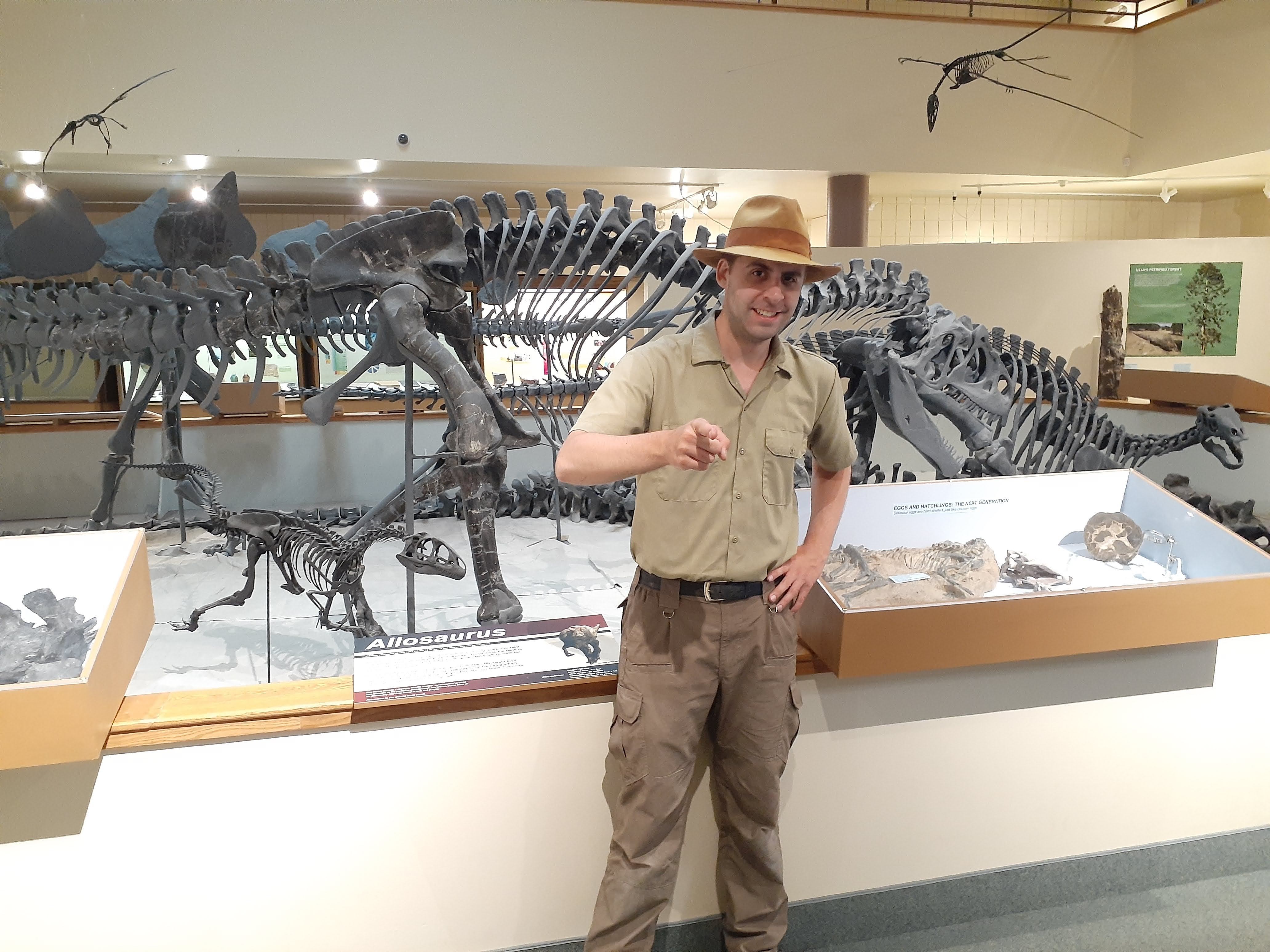Meet Taylor Oswald! He is an Arizona-born Michigander who recently graduated from Brigham Young University where he also worked for six years at the BYU Museum of Paleontology, preparing fossils, repairing exhibits, giving tours, conducting field work, and writing for the museum’s social media pages. Post-graduation, he is now an independent researcher as well as a freelance contributor for #Facts: Dinosaurs.
As far back as he can remember (to about age 3 or 4), Taylor has had a passion for fossils, rocks, and animals, especially dinosaurs! “There are three kinds of people who know a lot about dinosaurs”, he likes to say, “kids, parents of dinosaur kids, and paleontologists. And paleontologists are basically just the kids who didn’t grow up. And that’s pretty much me to a T”. Since kindergarten, Taylor grew up reading books about dinosaurs. Some of his favorites were about the dinosaurs of paleontologist Jim Jensen, founder of the BYU Museum of Paleontology. Particularly Jensen’s Supersaurus is an animal that has always stuck with him. Little did he know that some 14 years later he would be working in the very same museum that Jensen founded and working with many of the bones that Jensen discovered, including Supersaurus. In fact, Taylor helped take measurements and pictures of the original Supersaurus material to aid in a project that recently found Supersaurus to have been longer than previously thought, putting it in at 130 ft or more and giving it the title of “World’s Longest Known Vertebrate”!

Despite his love of Supersaurus, Taylor’s true passion is carnivores, specifically theropods and crocodilians. And above all, the dromaeosaurs, or “raptors” hold a special place in his heart. His research interests include predatory functional morphology, predatory ecology, and the study of dinosaur behavior. This has led him to not only look at the fossil record, but to also devote considerable study to modern animals, especially to birds of prey, which he views as the best means to understanding their extinct theropod relatives. In early 2023 he published a peer-reviewed paper called Observation of Claw Use and Feeding Behavior of the Red-Legged Seriema and Its Implication for Claw Use in Deinonychosaurs. He and his coauthors observed how red-legged seriemas, a type of large predatory bird from South America, fed and utilized their fearsome and raptor-like pedal claws. “These birds, being mostly terrestrial and predatory, and bearing an enlarged sickle-shaped talon on the second digit of each foot, are probably the best living proxy for the extinct raptors”, Taylor says, “they, along with other birds of prey, like hawks and eagles, are probably our best shot at understanding the raptors. And seeing a seriema use its claws to pin and tear apart its food was just a truly surreal experience that I’ll never forget. It’s probably the closest I’ll ever get to a Velociraptor and it felt almost like glimpsing back in time. Suddenly, raptors weren’t just old bones or movie monsters, they felt alive in their own right. Modern birds of prey, which are also called raptors, really are sort of echoes of their extinct raptor cousins, and my experience with them has given me a greater appreciation for both living and extinct raptors. I hope every up-and-coming paleontologist gets to have an experience like that”. Taylor’s research supports the hypothesis put forward in 2011 by Dr. Denver Fowler that raptors didn’t use their claws to slash and disembowel as is often thought, but rather they used their claws more like those of birds of prey, to pin and grasp their prey.
Other research that Taylor is working on includes a paper on raptor behavior, a study on the behavioral ecology of Ceratosaurus, a study on the ecology and identification of a potentially new species of crocodilian from the Eocene, and a report and analysis of evidence for large allosauroids in Early Cretaceous Utah, including what might be the earliest evidence for carcharodontosaurids yet known from North America! The latter project will be presented at the annual meeting of the Society of Vertebrate Paleontology in October, 2023.
When not working on research, Taylor enjoys hiking, birdwatching, Dungeons and Dragons, writing fantasy, and growing exotic plants, including a few that lived alongside the dinosaurs! He currently lives in Utah.
Taylor’s paper on seriemas and raptors can be found here: https://bioone.org/journals/journal-of-the-arizona-nevada-academy-of-science/volume-50/issue-1/036.050.0103/Observation-of-Claw-Use-and-Feeding-Behavior-of-the-Red/10.2181/036.050.0103.short
